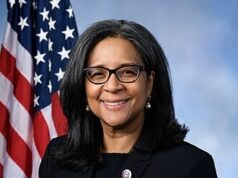EPA Provides Resilient, Renewable Energy Study Results to Culebra, Puerto Rico
Culebra, Puerto Rico – (RealEstateRama) – In its continuing efforts to help the Caribbean recover from the long-term impacts from Hurricanes Irma and Maria, the U.S. Environmental Protection Agency (EPA) and the U.S. Department of Energy’s National Renewable Energy Laboratory (NREL) have published the results of a study to take steps to provide renewable energy through a hybrid microgrid to the Puerto Rico island of Culebra. Microgrids that integrate renewable electricity from solar panels with diesel generators and electricity storage provide electricity for critical buildings or sites to operate during a power outage.

Hurricane Maria made landfall on Sept. 20, 2017 and rendered the island without electricity for approximately three months until two diesel generators were used to provide power. Through a partnership with NREL and funding through EPA’s RE-Powering America’s Land Initiative, EPA Region 2 was able to conduct a renewable energy alternative study for Culebra and its approximately 1,800 residents. In June 2019, the U.S. Economic Development Administration (EDA) announced a $4.1 million grant, with $1 million in local fund matching from the Community Foundation for Puerto Rico, to install a microgrid system to support businesses in Culebra.
“Microgrids that integrate renewable energy are greener and more resilient than most of the island’s, which is why this study was so important to Puerto Rico and the island of Culebra,” said Regional Administrator Pete Lopez. “Through strong federal, state and local partnerships, EPA and NREL were able to promote an environmentally and economically beneficial solution to the challenges that natural disasters like Hurricanes Irma and Maria brought to the Caribbean.”
“In April 2018, NREL conducted a high-level energy resilience assessment for Culebra. We evaluated the feasibility of implementing a diesel generator plus solar photovoltaics and battery storage to improve the energy resilience of Culebra’s critical infrastructure,” said Gail Mosey, senior research analyst at NREL. “Our analysis indicates that renewable energy hybrid microgrids are potentially economically viable on Culebra and could improve energy resilience. Further analysis can determine the best mix of diesel, photovoltaics and battery storage to support the island’s critical infrastructure needs.”
“Our municipality strongly supports this initiative. We have the obligation to take care of our environment by promoting sources of clean energy, but also, the impact of Hurricane Maria opened our eyes to the importance of having a resilient and decentralized energy system,” said Culebra Mayor William I. Solís Bermúdez. “This is definitely an important step in the right direction and we will continue working until Culebra becomes an example to follow for all Puerto Rico and the world.”
“This project was a unique opportunity for the University of Puerto Rico-Mayaguez (UPRM) to help the local community of Culebra but at the same time to expand our collaborations with federal agencies like EPA and NREL,” said Dr. Eduardo I. Ortiz-Rivera of the University of Puerto Rico-Mayaguez. “UPRM is very proud of the excellent academic and research status in the Caribbean but also is very proud of its service to the different communities in Puerto Rico.”
The study, conducted by EPA, NREL, and the University of Puerto Rico-Mayagüez, identified five critical buildings that would benefit from the resilience of renewable energy hybrid microgrids: the health clinic, police station, fire station, municipal building, and wastewater treatment plant. Renewable energy hybrid microgrids consist of a diesel generator, solar cells and a battery-like energy storage system that provide additional electricity for a critical building or site to operate during a power outage. The study found the use of the microgrids to improve electrical resiliency, provide long-term economic profitability, and increase the development of the local workforce.
In November 2018, EPA and NREL presented the draft report of the study’s findings to the Mayor of Culebra, William I. Solís Bermúdez. Other instrumental participants in the meeting included the EDA, the University of Puerto Rico-Mayaguez, local job training provider PathStone Corporation, the Community Foundation for Puerto Rico, and the Culebra-based community organization Mujeres de Islas. The presentation emphasized that local resources in Puerto Rico were available to apply for funding of a future microgrid project, to perform additional energy analyses for the sizing of a system, and to consider job training opportunities to prepare the local workforce in the field of microgrid installation and maintenance.
NREL published the Culebra microgrid study on its website for interested stakeholders and other local governments to review and determine if their community could benefit from performing a similar study. The study can be accessed here: https://www.nrel.gov/docs/fy19osti/73885.pdf
Follow EPA Region 2 on Twitter at http://twitter.com/eparegion2 and visit our Facebook page, http://facebook.com/eparegion2.
Contact Us to ask a question, provide feedback, or report a problem.
Contact Information:
Brenda Reyes ()
787-977-5869
Tayler Covington ()
212-637-3662

















